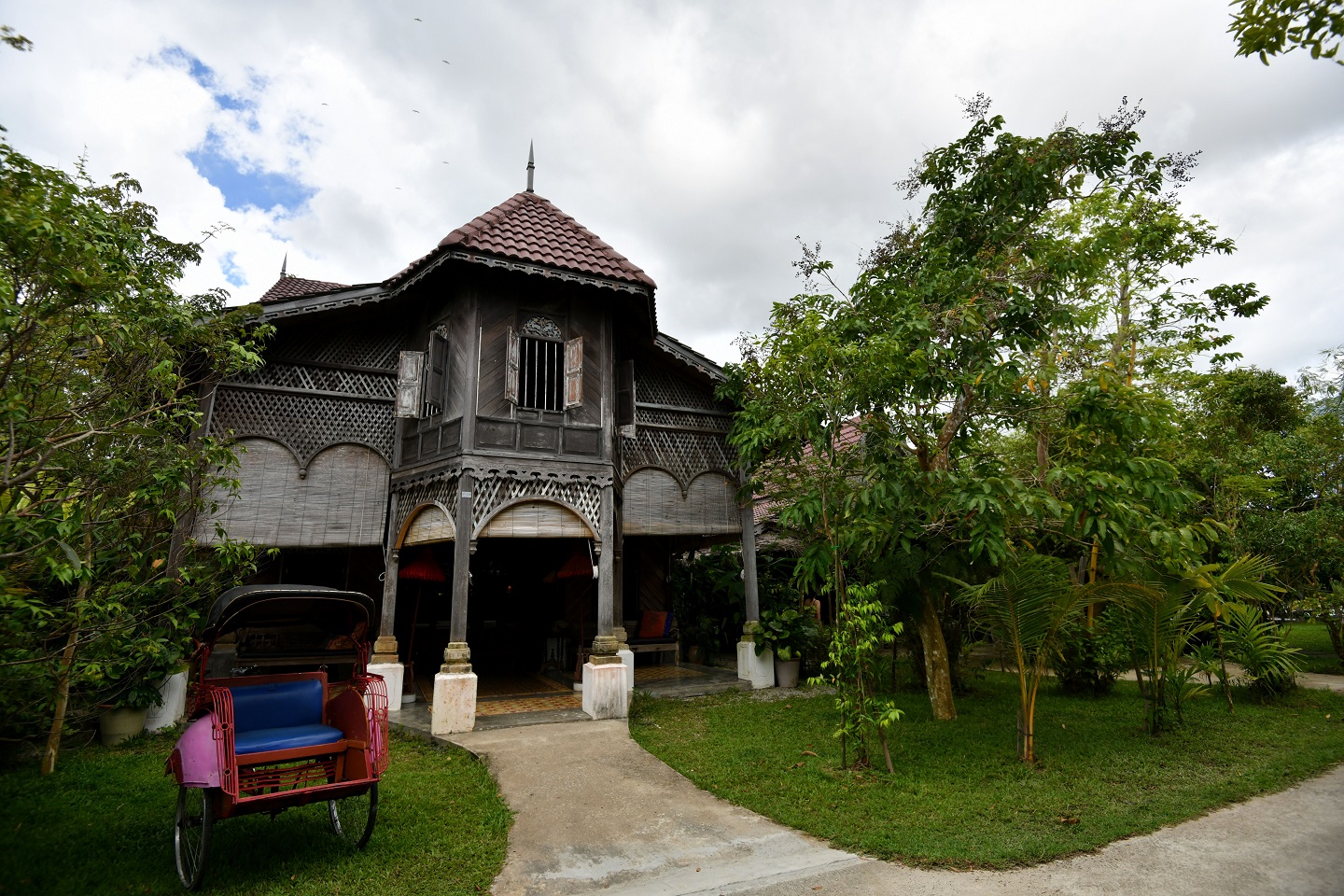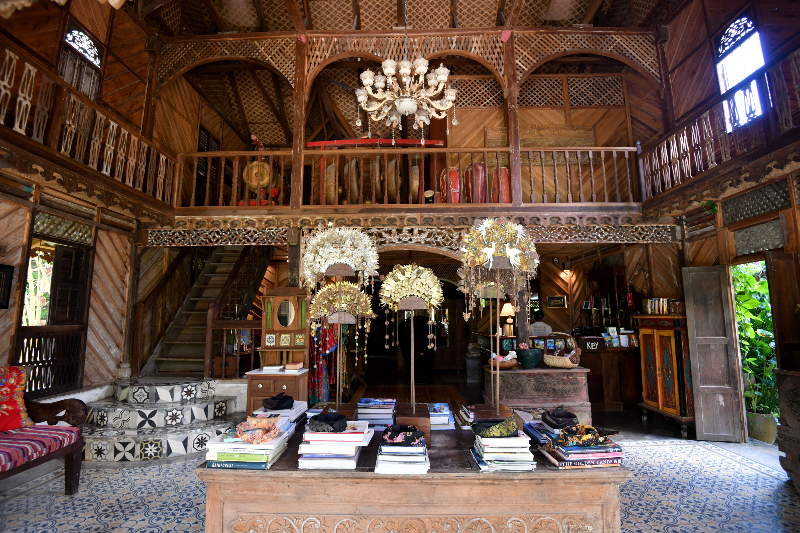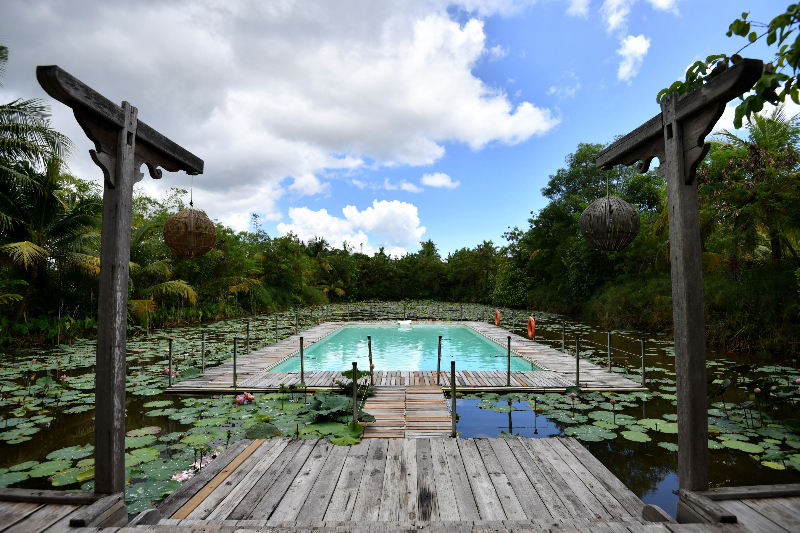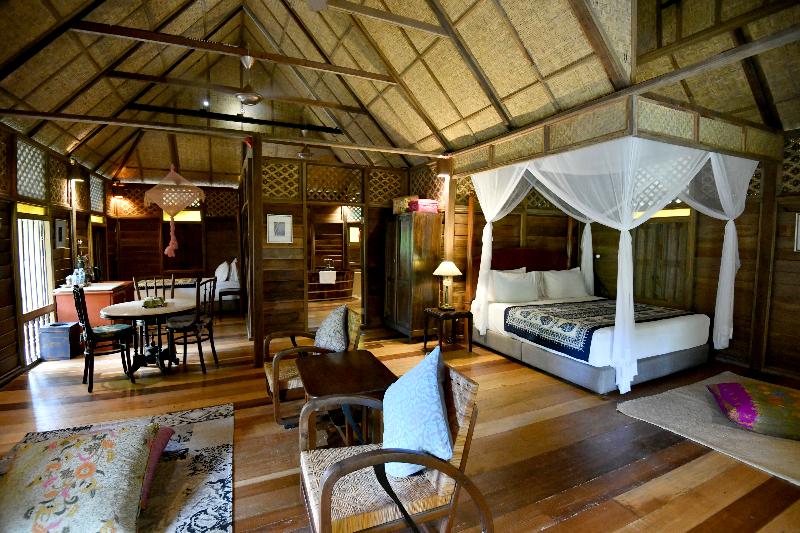
The lobby building is over 200 years old, and while it has been renovated, the essence of its tradition is kept intact (All photos: Sam Fong/ The Edge Malaysia)
There is something about a daunting future that makes one yearn for the past. What more amid the ageing society we are becoming. Recognising this, a growing number of hotels and resorts are borrowing from the past to create a relaxing space.
One such venture is Kunang-Kunang Heritage Villas in Langkawi, where old Malay houses are upgraded into comfortable villas without sacrificing their inherent charm, as Haven found during a recent visit.
We leave the hustle and bustle of Pantai Cenang behind as we enter Kunang-Kunang, which means fireflies in Malay, and are immediately transported to a calm, countryside setting over three hectares. Walking past a gravel parking lot, we drink in the lush greenery populated with butterflies and flowers. At the entrance, two cycle rickshaws greet us — one is for display, while the other, a fully functional one that offers guests a photo opportunity.
Ornamental Malay headdresses in glittering gold dominate the lobby laid with original floor tiles. The furniture is traditional — dark wood or rattan.
sam_2781.jpg

What makes Kunang-Kunang unique is that each villa is a refurbished old kampung house — most are more than 100 years old — relocated from elsewhere. Even the lobby is a 200-year-old house from Kampung Manong in Kuala Kangsar, Perak. The ceilings are necessarily new, but even then, tradition was kept alive by getting Orang Asli artisans to weave the mengkuang leaves that form them.
Our first stop is the Pohon Beringin Restaurant — serving traditional Malay fare, of course. For the set lunch (RM80 for 2 pax), we sampled authentic dishes like ikan siakap bakar (grilled sea bass), kangkung goreng belacan (fried water spinach in belacan), masak lemak telur itik (duck egg with coconut gravy) and a sweet finish of bubur pulut hitam (black glutinous rice porridge).
Next to the restaurant is an open lounging area across two floors facing Kunang-Kunang’s crowning glory — its pool, made of canvas and floating in a 200m water lily lake. Guests can have a dip or simply enjoy the view from the lounge chairs placed on the wooden deck.
sam_2672.jpg

We follow a path, through light-blue louvre doors, past more greenery, before we see the villas, surrounded by trees and plants for privacy, and keep to it relatively cool during the warmer months. There are only 20 villas — 14 from Perak and six from the island itself, named after their place of origin.
We check out Villa Ulu, from Perak, furnished with a king bed and a single bed, making it suitable for families. The traditional architectural aesthetics have been retained, while modern amenities, such as air conditioning and a mini bar, were added. As fashion designer Radzuan Radziwill owns Kunang-Kunang, it is only natural that stylish batik prints are found everywhere in the villas, from pillows and seat cushions to table cloths and hanging robes.
The bathrooms are perhaps the most luxurious feature, with traditional tiles decorating the floors. Most have a wooden tub, some have both indoor and outdoor showers — really bringing home the idea of returning to nature and tradition.
sam_2700.jpg

Villa Teriang, which comes with an extra large double bed and two rattan and wooden chairs that look out to the surrounding greens, is highly sought-after by couples. Villa Semat, another favourite of couples, is more spacious.
We walk by each of the uniquely named houses — Nyior Cabang, Bekor, Temoyong and Ara, to name a few. At the end of the row of villas are a few landed houses that can accommodate up to six guests.
The nostalgic charm of Kunang-Kunang is further enhanced by a friendly rooster and hens ambling about the tranquil surroundings. Top that off with spa facilities, and your vacation is complete.
While Langkawi boasts many lively hotels and modern accommodation, Kunang-Kunang may surprise you with how your mind can be refreshed and your soul rejuvenated by a sense of being suspended in times past.
This article first appeared in issue No. 102, Winter 2021 of Haven.


